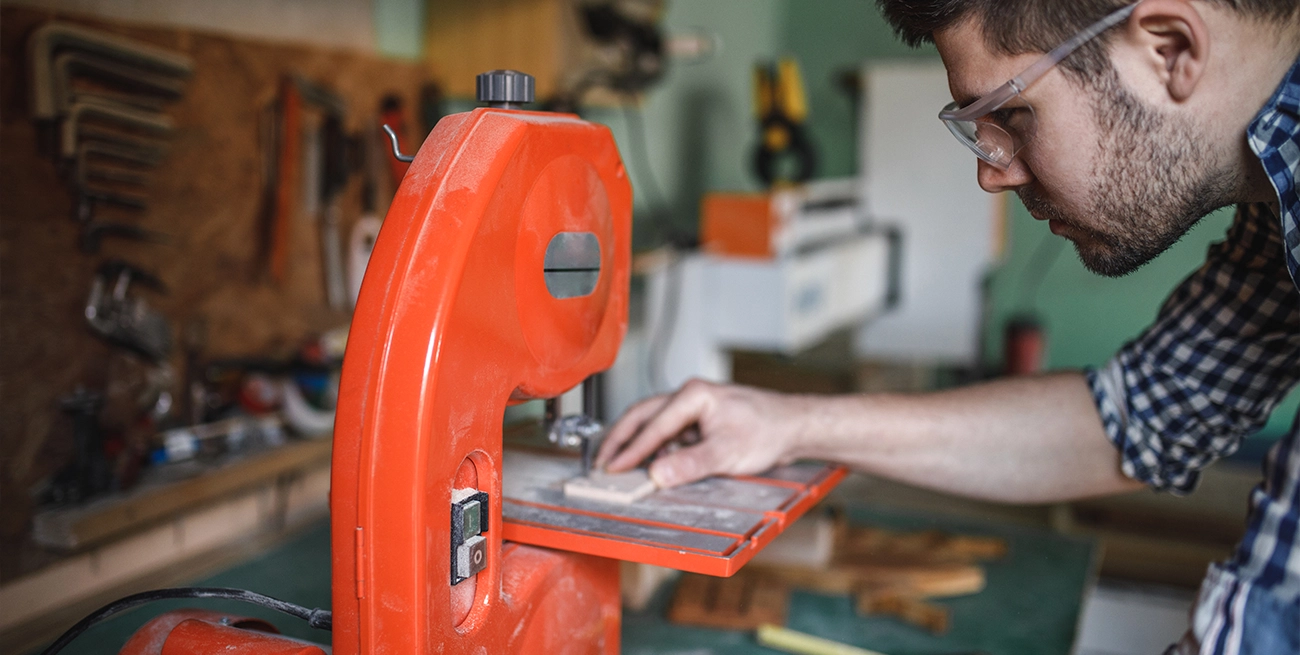Optimizing Bandsaw Use in Metal Fabrication vs. Woodworking

Running a bandsaw effectively depends on the material being cut. While both metal fabrication and woodworking rely on bandsaws, the machines, blades, and cutting techniques differ significantly. Understanding these differences helps prevent blade wear, improves accuracy, and keeps production moving efficiently.
Blade Selection Matters
Choosing the right blade is the most important factor in getting clean, accurate cuts. In woodworking, blades are designed with fewer, larger teeth to quickly remove material, while metal-cutting blades have finer teeth to handle the density of the material. Using the wrong type results in burned wood or chipped metal edges. Variable-tooth blades work well for both applications where versatility is needed.
Speed and Feed Rates
Speed adjustments play a major role in performance. Wood cuts best at high speeds, often exceeding 3,000 feet per minute, while metal requires much slower speeds, typically below 300 feet per minute. Feeding material too quickly in metal cutting leads to excessive heat and dulls blades faster, while slow feeds in woodworking can burn the wood. Proper speed settings extend blade life and produce cleaner cuts.
Coolant and Lubrication
Wood cutting is typically done dry, but metal cutting benefits from coolant to reduce heat buildup and friction. Without lubrication, metal chips weld onto the blade, shortening its lifespan. If a saw is used for both wood and metal, ensuring proper cleaning between materials prevents sawdust contamination in metalworking coolant systems.
Workholding and Stability
Woodworking bandsaws often allow for freehand cutting with minimal clamping, whereas metal fabrication requires secure workholding. Vises, clamps, and magnetic chucks help prevent material movement, reducing the risk of inaccuracies or dangerous kickbacks. Ensuring stability keeps cuts consistent and prevents blade damage.
Dust and Chip Management
Woodworking generates fine dust that needs proper extraction to maintain air quality and visibility. Metal cutting produces chips that can be sharp and hot, requiring dedicated chip trays and magnetic collection systems. Failing to clear debris can lead to overheating, tracking issues, and increased wear on machine components.
Machine Differences
While some bandsaws are marketed as dual-purpose, dedicated machines tend to perform better. Metal-cutting bandsaws feature stronger frames, gear-driven motors, and variable speed controls, while woodworking saws prioritize lighter builds and higher-speed operation. Trying to use a woodworking saw for metal cutting without modification often results in blade and motor damage.
Safety Considerations
Both applications require protective gear, but risks vary. Woodworkers deal with kickbacks and airborne dust, necessitating guards and dust masks. Metalworkers face sharp, hot chips and often need face shields, gloves, and coolant splash protection. Ensuring proper safety measures are in place reduces accidents and improves working conditions.
Maintenance and Blade Longevity
Keeping a bandsaw in good condition requires different approaches depending on the material. Woodworking bandsaws need regular blade cleaning to remove resin buildup, while metal bandsaws require blade inspections for tooth chipping and cracks. Lubricating metal saw blades increases lifespan, while woodworking saws rely more on keeping bearings and guides free of dust buildup.
Choosing the Right Setup
Shops that cut both wood and metal benefit from separate machines or at least dedicated blades and adjustments for each task. Changing speeds, blades, and lubrication settings properly prevents unnecessary wear and maintains efficiency. Investing in the right bandsaw configuration leads to better results and lower maintenance costs over time.
Maximizing Bandsaw Performance
Understanding the differences between woodworking and metal fabrication bandsaws ensures better cutting precision and machine longevity. Whether adjusting speeds, using proper blades, or maintaining workholding stability, making the right choices prevents damage and keeps operations running smoothly. A bandsaw that’s set up correctly for its material delivers better results with fewer headaches.


